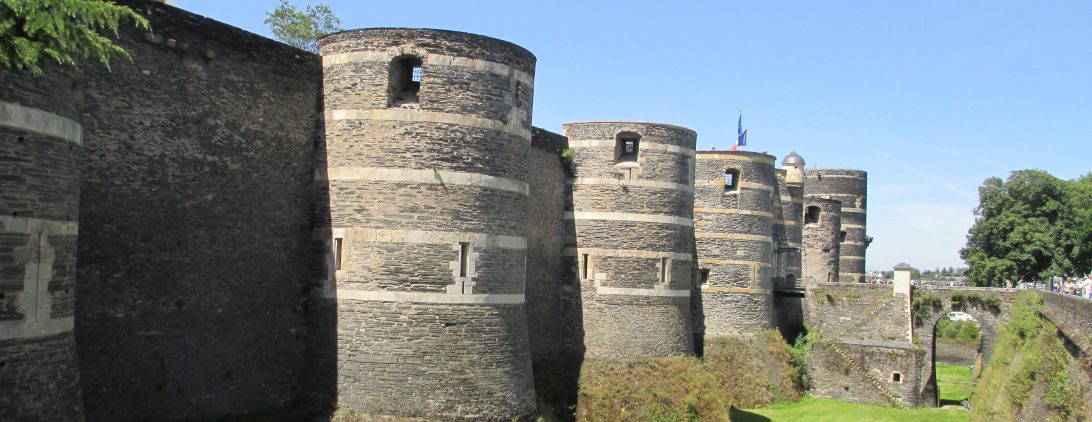This is my second easy to evil medieval quiz. To have a shot at the first click here.
The way this quiz works.
It’s pretty simple. You see the question with a photo underneath and underneath the photo, which might be some kind of clue, you’ll find the answer. There’s twenty five questions so keep track of how many you get right and how many you get wrong and see how you do at the end. There’s also a poll at the end so you can see how you compare to everyone else if you’re interested.
As the title suggests, it starts off easy and gets much more complicated. There are five sections: Easy, Medium, Hard, Difficult and Evil.
Easy
- What is name of the Duke who became King of England in 1066.

Answer: William I. Other acceptable answers include William the Conqueror and William the Bastard.
Photo: The Abbey of Sainte-Etienne in Caen where he is buried.
2. What is the name of King John’s Queen?

Answer: Isabelle of Angouleme. (any spelling of Isabelle is allowable, there’s lots of them)
Photo: Isabelle’s effigy (on the left) with Richard I, Henry II and Eleanor of Aquitaine in Fontevraud.
3. What is the name of the royal castle only an hour by train from London? The largest inhabited castle in the UK.

Answer: Windsor Castle.
Photo: Windsor Castle, obviously.
4. What is the name of the King who died at the Battle of Bosworth Field in 1485?
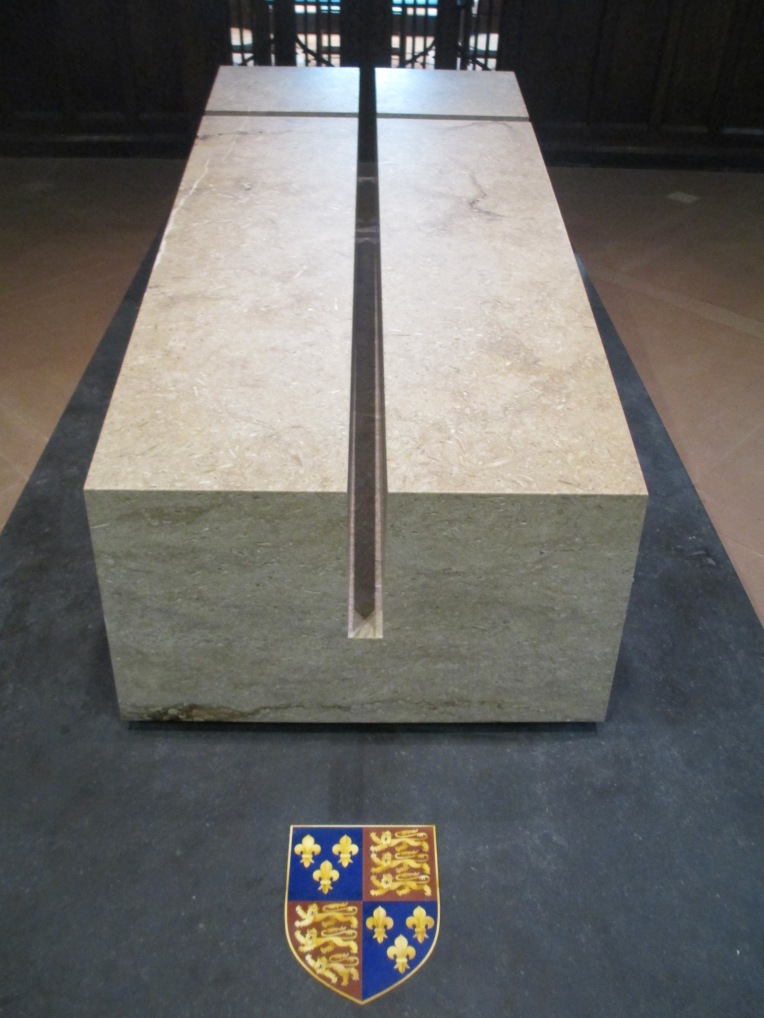
Answer: Richard III
Photo: Richard III’s tomb at Leicester Cathedral
5. What is the name of the abbey in London where a significant portion of the Kings and Queens of England are buried.

Answer: Westminster Abbey
Photo: Westminster Abbey.
Medium
6. Which king was known as Rufus and probably died in the New Forest?

Answer: William II
Photo: the ossuaries in Winchester Cathedral where his bones are thought to reside.
7. What Crusade did Eleanor of Aquitaine go on? Bonus point for the start date and or the King she went with.

Answer: 2nd Crusade, 1147 and Louis VII of France (to whom she was married at the time)
You get one bonus point if you got the date or the king. If you got both, you’re very clever but still only one bonus point.
Photo: Eleanor of Aquitaine’s effigy at Fontevraud.
8. Who was William Marshal‘s oldest son?
 Answer: William Marshal the Younger. You get the point if you just said William Marshal.
Answer: William Marshal the Younger. You get the point if you just said William Marshal.
Photo: What is probably the younger Marshal’s effigy in the Temple Church in London.
9. What area of what is now London was known in the medieval period for its brothels, and was the site of the Bishop of Winchester’s London palace who also licensed the brothels. The prostitutes are said to have been called Winchester’s Geese.
 Answer: Southwark
Answer: Southwark
Photo: The remains of Winchester Palace.
10. Who wrote the History of the Kings of Britain in 1136?

Answer: Geoffrey of Monmouth.
Photo: Monmouth Castle.
Hard
11. Who purportedly said. (Bonus point for who they are speaking about.)
“My Lords, here you see the countess whom I have brought into your presence. She is your lady by birth, the daughter of the earl who graciously, in his generosity, enfieffed you all, once he had conquered the land. She stays behind here with you as a pregnant woman. Until such time as God brings me back here, I ask you all to give her unreservedly the protection she deserves by birthright, for she is your lady, as we all know; I have no claim to anything save through her”.
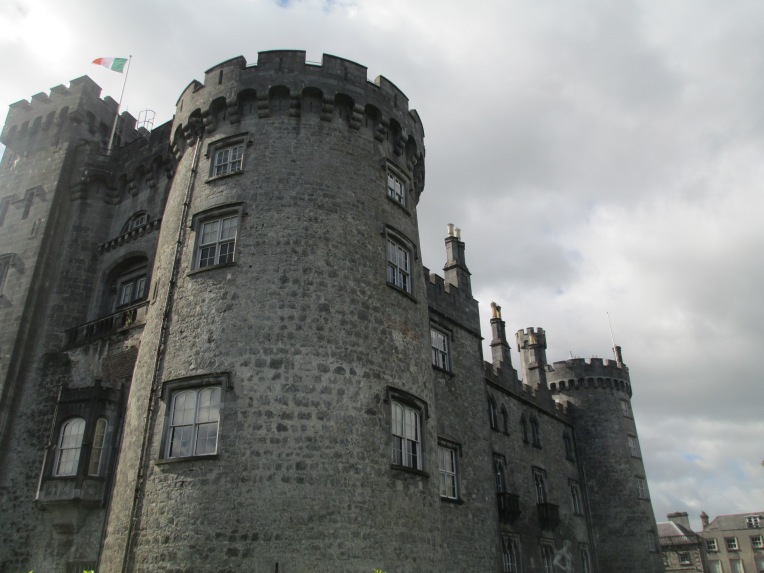
Answer: William Marshal, he was saying it about his wife Isabel de Clare. Remember you get the bonus point if you got Isabel de Clare too.
I use “purportedly” in the question because although it is recorded in his relatively contemporary biography we have no proof he actually said it, for more about the complexities of the History of William Marshal click here
The quote is from History of William Marshal Volume II. pgs 177-179. ISBN: 0905474457
Photo: Kilkenny Castle in Ireland, where the statement was purportedly said.
12. What are the dates of the Period of Anarchy where the Anglo Saxon Chronicle said “that Christ slept, and his saints.”
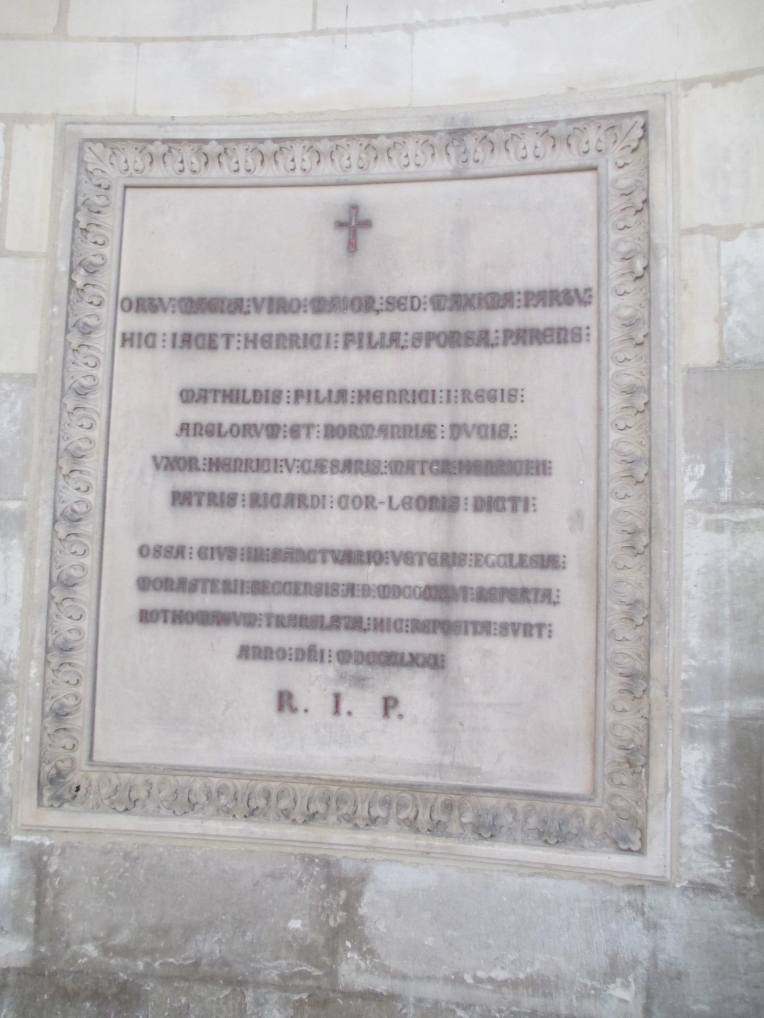
Answer: 1136-1154.
Photo: the non contemporary tomb of Empress Matilda, one of the participants.
13. What is the name of the Earl of Leicester who married King Henry III’s sister?

Answer: Simon de Montford.
Photo: Statue of Simon de Montford, non contemporary, on the clock tower in Leicester.
14. What was the name of William the Conqueror’s brother who possibly commissioned the Bayeux Tapestry?

Answer: Bishop Odo, you can have the point if you just said Odo.
Photo: Ships sailing to England in the Bayeux Tapestry.
15. What is the name of the mistress of John of Gaunt whom he later married?

Answer: Katherine Swynford.
Photo: Katherine Swynford’s tomb in Lincoln Cathedral
Difficult
16. Winchester Cathedral was begun in which century?

Answer: 7th century, though there is nothing left of the original building.
Photo: Winchester Cathedral
17.
Who built Castle Rising?

Answer: William d’Albini the Earl of Arundel you get the point if you just said William d’Albini.
Photo: Castle Rising.
18. Who wrote:
“I have your picture in my room; I never pass it without stopping to look at it; and yet when you are present with me I scarce ever cast my eyes on it. If a picture, which is but a mute representation of an object, can give such pleasure, what cannot letters inspire? They have souls; they can speak; they have in them all that force which expresses the transports of the heart; they have all the fire of our passions, they can raise them as much as if the persons themselves were present; they have all the tenderness and the delicacy of speech, and sometimes even a boldness of expression beyond it.”

Answer: Heloise. The quote comes from a letter from her to Abelard. It can be found at http://sacred-texts.com/chr/aah/aah04.htm
Photo: The non contemporary tomb of Abelard and Heloise in the Pere Lachaise Cemetery in Paris.
19. Who took Lincoln Castle in 1144. There were two, but you can have the point if you get one of them.
Answer: Ranulf Earl of Chester and his brother William of Roumare. You get the point if you got at least one of them and some variation on the name is OK.
Photo: Lincoln Castle.
20. When was the Charter of the Forest first issued separately from the Magna Carta? bonus point for who issued it.
 Answer: 1217, it was issued by Henry III under the seal of his regent William Marshal. If you got either Marshal or Henry III you get the bonus point. If you got both, well done you’re very smart, but no extra points.
Answer: 1217, it was issued by Henry III under the seal of his regent William Marshal. If you got either Marshal or Henry III you get the bonus point. If you got both, well done you’re very smart, but no extra points.
Photo: Lincoln Castle from inside the walls which holds a copy of the 1217 Charter of the Forest.
EVIL
21. What is the name of the cavern under Pembroke Castle and what stone is composed of?
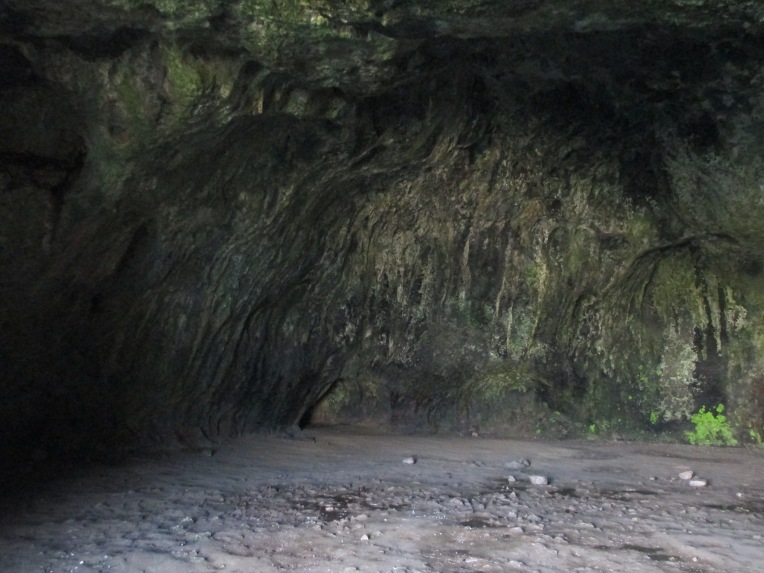
Answer: Wogan’s Cavern and limestone. you need both to get the point.
Photo: The cavern.
22. Where is this description from the Domesday Book describing?
“King Edward had 51 Burgesses paying rent and 212 others over whom he had sake and soke, and three mills rendering 40s. Now there are 19 Burgesses paying rent. Of [the houses of] the 32 others who were [there] 11 are waste in the city ditch and the archbishop has 7 of the them.”

Answer: Canterbury. The quote is from the page five of the Penguin Classics edition of the Domesday Book.
Photo: facsimile of the Domesday book from the National Archives.
23. What is the name of the chapel in Richmond castle and what century does it date to and what type of vaulting is the roof?
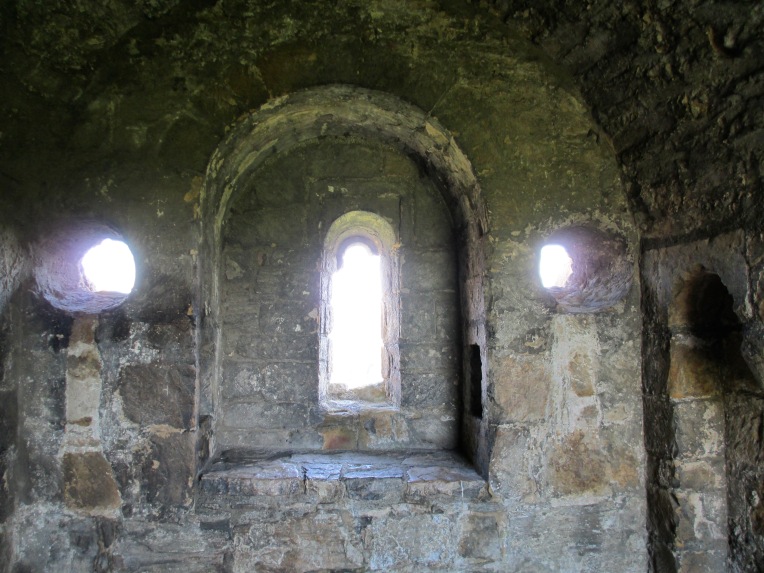
Answer: St Nicholas’ chapel, 11th century and barrel vaulting. You need all three for the point.
Photo: The chapel.
24. What was the amount of money paid to Prince Louis of France to leave England in 1217?
 Answer: 10 000 marks
Answer: 10 000 marks
Photo: The effigy of William Marshal in the Temple Church. He was regent at the time the money was paid.
25.
Who created the Lindisfarne Gospels and when did they die?

Answer: Eadfrith, Bishop of Lindisfarne and 712.
Photo: Lindisfarne Abbey.
THE END
So that’s it. How did you do?
1-5: Well you’ve got some basics down pat. Good start.
6-10: You know more than basics, well on your way.
11-15: Good work, beginning to build a wealth of obscure facts.
16-20: Impressive. You know you stuff.
21-25: Incredible effort. You may know more about this period than is sensible
26-27 remember the three bonus points: Speechless. Incredible. You definitely know more than you need to about this specific period and area.
28: If you got them all… Sure you didn’t write the quiz?
Now if you feel like it put your results in the poll below.
